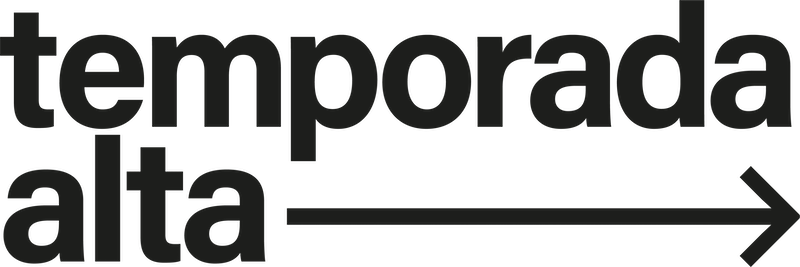2021 Edition
The 30th edition
In Temporada Alta we are celebrating our 30th edition this autumn with a program of 106 shows spread over 19 stages in 6 different towns. An anniversary marked by the great effort to return to a normalcy that seems closer and closer despite not having fully arrived. In this way, with the Covid restrictions still in force, from the festival we bet again on the presence, to program more international proposals – twice as much as the last edition – and with more own productions and co-productions. Despite these circumstances, we expect to reach one million viewers in our history.
During these three decades, as a festival, we have wanted to establish lines that define our essence and that we still maintain. They are a remarkable international presence, the impetus for creation, the support of local artists and Catalan companies, the balance between popular productions and more experimental proposals and initiatives that go far beyond a program like PPP, IETM, A Tempo or the professional week.
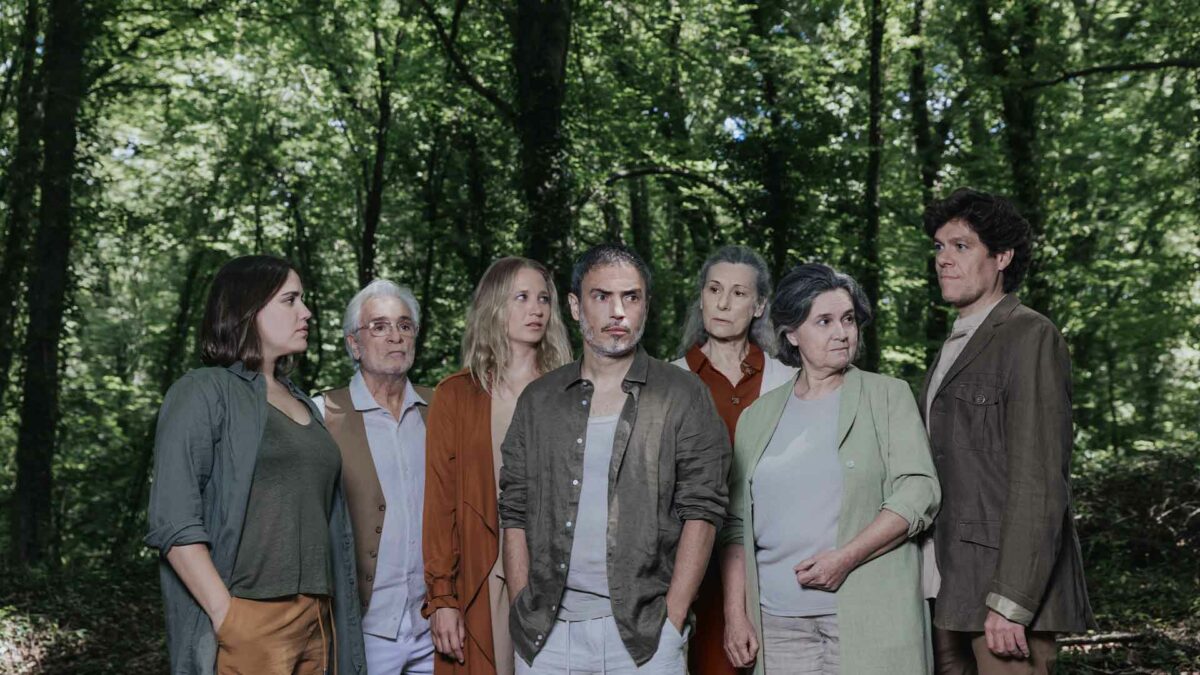

They said about the anniversary…
We have asked different people from the cultural, political and economic spheres to assess what Temporada Alta has meant in the last 30 years:
“In the beginning, Avignon was the chimera, the utopia. Not anymore. With a different identity, with their own personality, Girona and Temporada Alta have entered the geography of the world’s festivals “
Joaquim Nadal i Farreras
Mayor of Girona (1979-2002) and president of the La Ciutat Invisible Foundation
“I lived in Barcelona in 1992 (…) Thirty years later, Temporada Alta is the international festival where I have presented almost all my creations”
Christiane Jatahy
Author, theater and film director
“Temporada Alta is an example of poetry and the spirit of programming. He has managed, edition after edition, to build an identity that is one and multiple, as unique and recognizable as it is open and eclectic. An identity celebrated and applauded inside and outside our borders, and which has placed Girona in the constellation of theatrical cities, consolidating it as a neuralgic point of the living arts “
Alberto Conejero
Playwright, poet and director of the Autumn Festival of the Community of Madrid
“Culture is not an expense, but an investment. And, in the case of Temporada Alta, not only for the high quality of the performing arts that are represented there and for its project of social cohesion, but also for its economic repercussion on the territory “
Lídia Vidal Juventench
Second Vice President of the Girona Chamber of Commerce
Documents
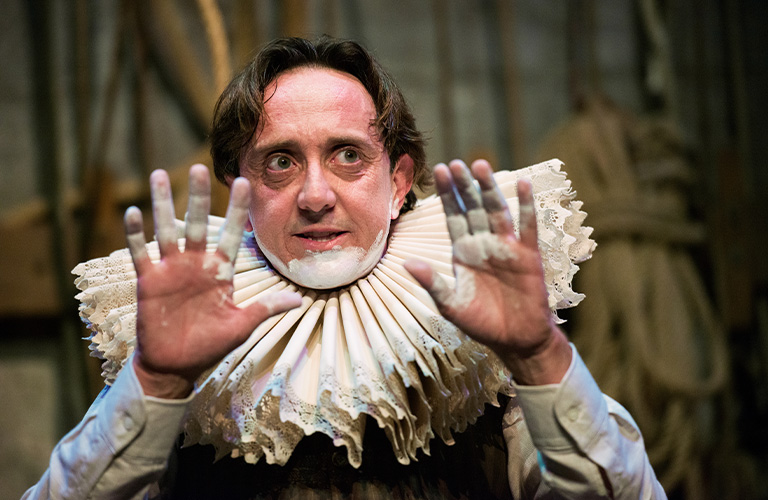
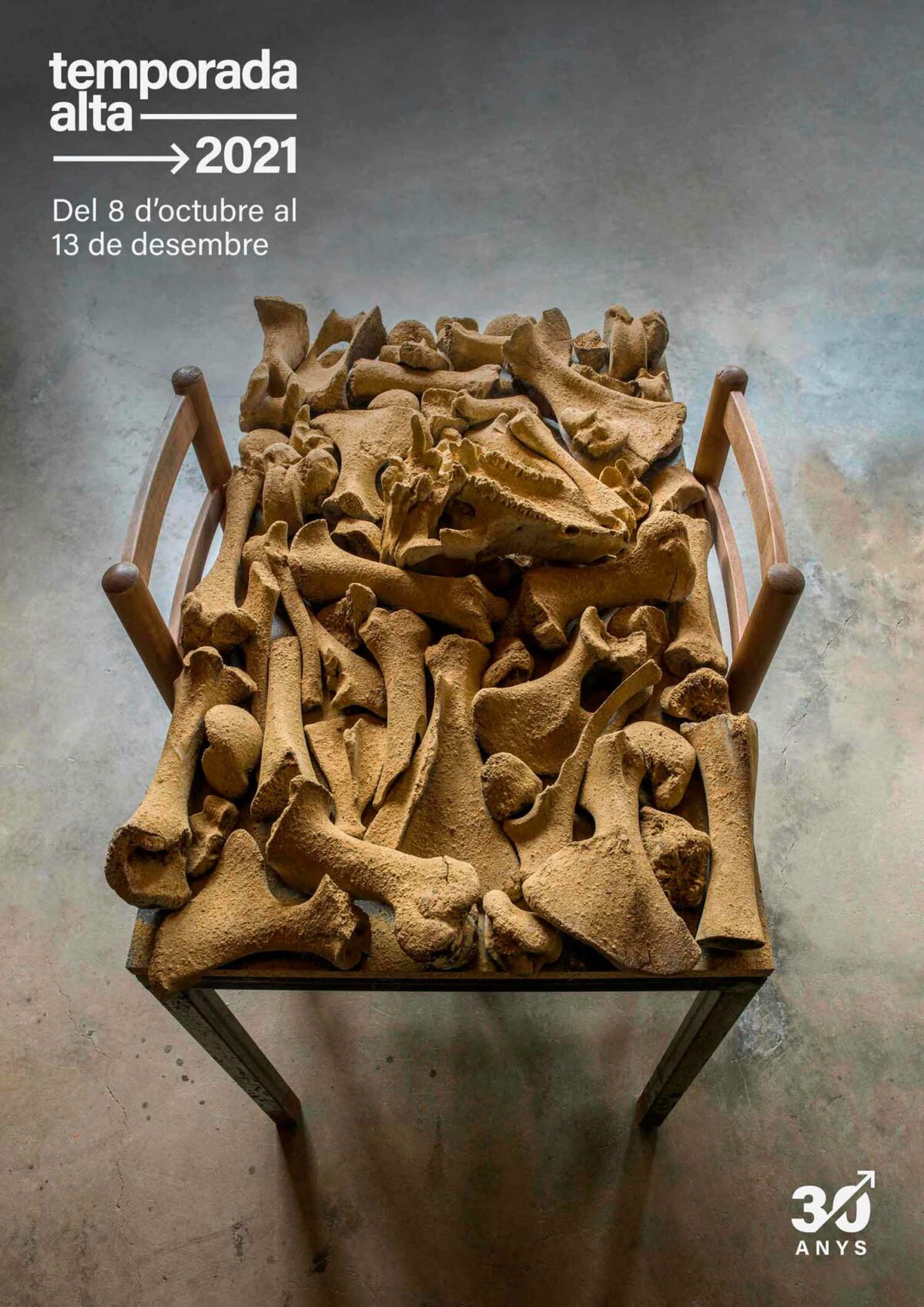
The poster: Pandemic’s Hamlet
Hamlet couldn’t come, accompanied by Horace, Ophelia, or anyone from the troupe. Hamlet has not come. The theater is closed, no one is left. All that’s left is the theater table, full of corpses and bones. “The leftover meat from the funeral turned into a cold dinner at the wedding,” Hamlet told us. And certainly no matter how much we hide the bodies of the dead, the victims of the pandemic, the specter of death and fear still dwells among us. We haven’t mourned yet, although we want to fill the theaters so we can go out at night and swim in the summer sun.
“Something is rotten in Denmark,” said Officer Marcel. Something is rotten in Denmark, in Catalonia, in Spain, in Europe, all over the world. The pandemic has left us naked and has left us with no doubt that the climate emergency and the imbalances of all kinds that mass consumption has caused on the planet are irreversible. We can only stop, look at our table full of corpses and bones, and act to conjure ourselves up, stop savage and predatory capitalism, think of our world, and avoid the catastrophe that we have on our side every day and that the pandemic does not cease to remind us.
This is what the magnificent poster that Pere Noguera (La Bisbal, 1941) has made for this new edition of Temporada Alta, which celebrates its 30th anniversary in 2021, suggests to me! Pere Noguera has returned to the theater. In a radical and forceful way, as he usually does in his work, with his new work Nodrir. Vacamorta és la materia (2021), Pere Noguera puts a mirror in front of us and makes a contemplation without contemplation of our hypocritical and unconscious society that seems unwilling to accept reality, unwilling to look at what we have on the table.
Although Nodrir is a new work, the elements that make up the piece are part of the elements that make up the artistic language of Pere Noguera for more than fifty years. Two fashion chairs, a wooden table, animal bones and clay dust. Like a rain of mud, an essential element of the work of the artist from La Bisbal, the pandemic has dyed our vision of reality, it has changed our vision of the world.
The title, Nodrir is still a paradox, a misunderstanding, a game of language that Noguera likes so much. Naturally, feeding us a bunch of animal bones is one of the most challenging things in the world. We eat our flesh and leave our bones. As for the subtitle, Vacamorta és la materia, it is a reference to the world that is part of the symbolic and material environment of Pere Noguera.
For many years, Pere had a studio near Cruïlles. And he did various actions on the Terrera Trayter, also known as Vacamorta by the local farmers, because of the large number of animal bones that were there. In the Vacamorta wetland, in Cruïlles, he performed the action Esquelets flotants per un repàs a l’aigua, in October 1985. And the bones of animals stacked or scattered form one of the essential elements of several installations he has made in Noguera, such as Esquelets de balança, in the exhibition Llacs, illes, pedrals i morts,, at the Palau de la Virreina, 1996; El color m’afecta, at the Fundació Espais de Girona, 1999, or Mundial (Revestir/Revestiment), Edifici Mundial, La Bisbal d’Empordà, 2004.
We can now see a good number of the most significant works by Pere Noguera, in the large exhibition dedicated to the Rafael Tous collection of conceptual art at the MACBA. But we haven’t seen Pere Noguera’s sets in the theater for a long time. I still remember the wonderful Rosa Novell, in Oh, els bons dies by Samuel Beckett, in 1984, reciting the great text of the Irishman, sunk in a barren field, a desert of sand and clay, created by Pere Noguera. Or the long-lost Quim Lecina, dragging river stones, while saying the paradoxical and cynical extraordinary text of Fernando Pessoa, from El banquer anarquista, in 1989. He still, together with Pep Duran, did the scenography for a few shows directed by the beloved and ill-fated Moisès Maicas, such as Gran imprecació davant la muralla de la ciutat, by Tankred Dorst, in 1989; L’Alfa Romeo i Julieta i altres obres, by Josep Palau i Fabre, in 1991, or El pop o la visió hyrcanesa del món, by Stanislaw Ignacy Witkiewicz, in 1994. And he has made some unique interventions such as Flama horitzontal,, at the Teatre Principal of Olot, in 2000.
That’s why I celebrate that Temporada Alta wanted to commission Pere Noguera for the 30th anniversary of the Festival. Undoubtedly, the work proposed by the artist does not tell us about a domesticated and soft theater, but rather a theater committed and critical of reality. Surely, after the hardest moments of lockdown and the pandemic, Temporada Alta will once again offer us those magical and unrepeatable moments that fascinate us so much about the good and great theater of the world.
Manuel Guerrero Brullet
Pere Noguera (La Bisbal d’Empordà, 1941)
La fotocopia com a obra document (La Sala Vinçon, Barcelona, 1975), Arxiu-Sèrie Massanet (Galeria Massanet, L’Escala, 1977), La Terrissa de la Bisbal l’argila com a matèria, el procés d’elaboració com a pràctica (Fundació Joan Miró, Barcelona, 1978). Three paradigmatic exhibitions in which he foreshadows what the Nucli Noguera will be: The Matter and the common object as thought. Photographic and film archives disturbed as research. Technology (printer, scanner…) as a cooperating medium in the exhaustive exploration of the image. Naturally, between 1979 and 1980, his work related to clay evolved into the practice of mud-making, which consists of covering or dusting spaces and objects with mud. makes the first major site installations, opens up to the energy of nature, gets involved with the landscape, which will be a new persistent trigger in his work. During the 80’s and 90’s he made several sets, among which we highlight OH, Samuel Beckett’s Bons dies directed by José Sanchiz Sinisterra in 1984 included in Isidre Bravo’s L’escenografia Catalana (Diputació de Barcelona, 1986).
Irony, intuition, chance, training and play, validate the wide and multifaceted trajectory where the multiple registers such as the installation, the photographic process, the video, the art of action, the theatrical scenography, the non-formal pedagogy they form an extensive artistic task. He was a founding member of Metronome. From 1997 to 2006 he directed the museography work and the staging of the collection at the Terracotta Museum in La Bisbal d’Empordà.
Last year, the exhibition A tot li cal una paret curated by Vicenç Altaió was shown in the Espais VOLART of the Fundació Vila Casas and his work is currently present in the exhibition TEMPS REAL. The Rafael Tous Collection of Conceptual Art at the Museum of Contemporary Art in Barcelona, the result of a donation made by the collector to the museum in February 2020.
Selected works: Exposicions (Ex), instal·lacions (I), accions (A), escenografia (E): 2018 pentagrama vertical – Pluja de terra líquida – Donar la mà acció (A-I), 2n Cicle d’intervencions artístiques a la caseta elèctrica de la Pletera, l’Estartit / 2017 Leer es el inicio (Ex), Galeria Jose de la Mano, Madrid / 2012 Paper Carbó Sèrie–Arxiu Família Guerra (I) MUME, La Jonquera / 2011 Històries d’arxiu (Ex) Fundació Antoni Tàpies, Bcn / 2008 Il peperoni del silenzio (A) Bolognano (Italia) / 2004 Allophane (I) Zwalm (Belgica) / 2001 Més tot allò/dibuix a la cuixa (E) Centre d’Art Santa Mònica, Bcn / 2000 Flama horitzontal (E), Teatre Principal d’Olot / 1999 El color m’afecta (I) Fundació Espais, Girona / 1998 Després de l’acció (A) MACBA, Bcn / 1996 Llacs, illes, pedrals i morts (E) Palau de la Virreina, Bcn / 1994 El pop o la visió hyrkanesa del món (E) de Stanislaw Ignacy Witkiewicz, Teatre Invisible./ 1994 364 segons (A) MNCARS, Madrid / 1993 El motiu és secret (A) Revista Parlada, Jardí de la casa de Jordi Benito, Bcn / 1992 Com si (I) Baden-Baden (Alemanya ) / Amazonia-preservaçao. 5 estrellas radio taxi 2294799 (I) Belém (Brasil) / 1991 L’alfa Romeo i Julieta i altres obres (E) de Josep Palau i Fabre, Teatre Invisible / 1989 El banquer anarquista (E) de Fernando Pessoa, Teatre Invisible / 1989 Gran imprecació davant la muralla de la ciutat (E) de Tankred Dorst, Zitzania Teatre / 1988 Revolt de torrent (I) Metrònom, Bcn / 1984 Torens van babel (I) Anvers (Bèlgica) / 1984 Oh, els bons dies (E), de Samuel Beckett / 1984, Trànsit (I) Rambla de Santa Mònica, Bcn / 1983 fe2 o3 (I) Metrònom, Barcelona / 1982 Passage de securité (I) Centre George Pompidou, Paris (Fr) / 1982 Horitzontal (I) MHCG, Girona / 1982 Museu ficció (I) Olot / 1981 h2o (A) Lió (Fr) / 1980 La visita ets tu … i els teus accessoris (I) Galeria Canaleta, Figueres / Prop de la terra (I – A) Terrera Trayter, Vacamorta-Cruïlles.
Short Film: Alopècia androgènica
This project began two years ago, just before my daughter Athena was born, and during an autofiction writing workshop given by playwright Sergio Blanco in Sala Beckett.
As a new student, I can say that focusing on the self is a very difficult thing that I have never done before and that I will probably never do again. From then on, however, I was clear that I needed to talk about the inevitable tension between creation and procreation, and therefore about growing up, being a father, being a child, and being or not being an artist.
So, I come up with ideas, and to see them flush it out, it’s really fun. I was interested in talking about genetic inheritance and historical inheritance, which was born in Greece twenty-five centuries ago, and from which we cannot escape. Redeem me, pay homage to the theater and celebrate the 30th anniversary of the festival.
Redimir-me, fer un homenatge al teatre i celebrar que el festival ha fet 30 anys.
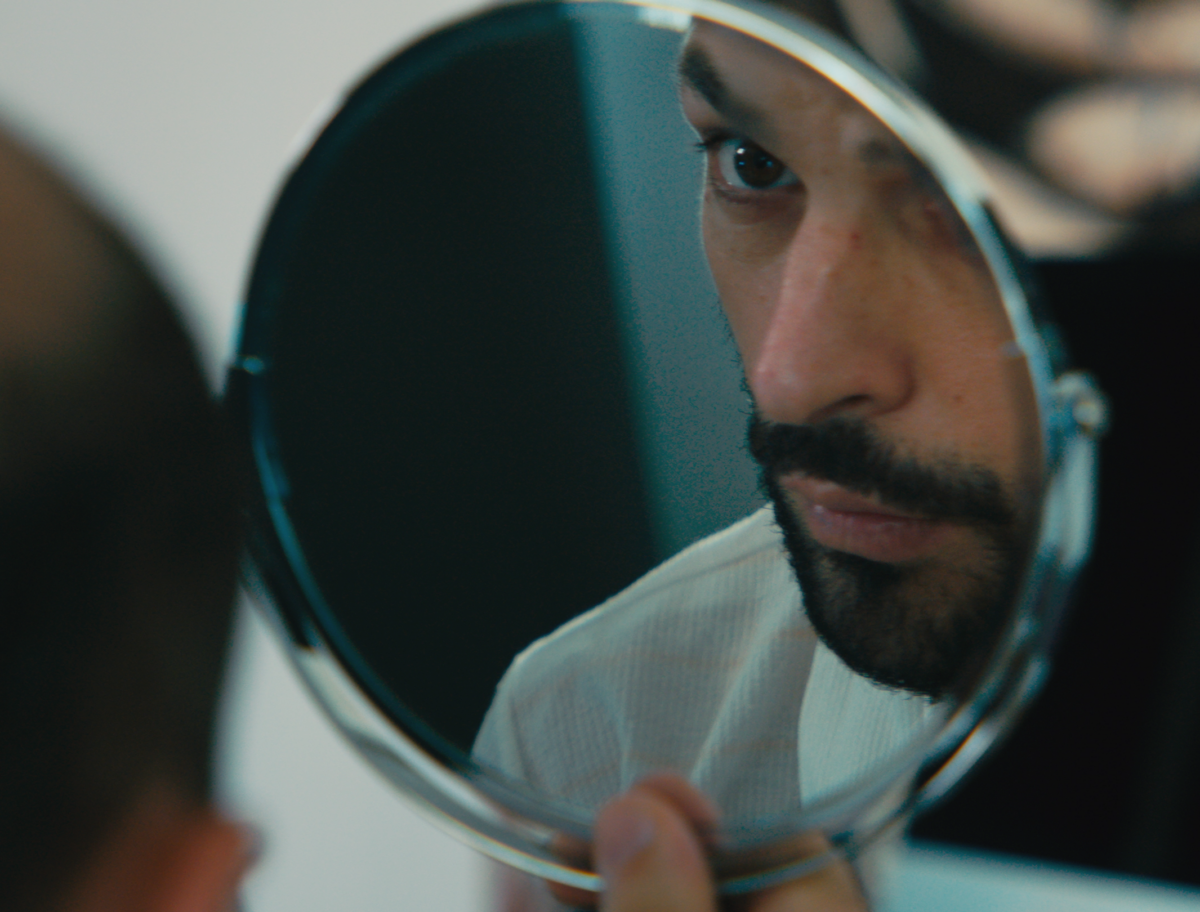
Sure, there are too many things to fit in a short film, but this is the result of an imperfect journey that I have been able to make thanks to the people I have met over the ten years that I have directed the Temporada Alta spots, and they are they who have somehow marked the end result.
Although everything here may be a lie, a truth, or both, I can assure you that I have tried to do so with the utmost honesty, modesty, and courage, virtues that I do not have in abundance.
Salvador Sunyer i Vidal / director of the short film
FITXA ARTÍSTICA / TÈCNICA
Director: Salvador Sunyer
Screenplay: Salvador Sunyer and Víctor Santacana
Cast: Salvador Sunyer, Sergio Blanco, Laura Weissmahr, Guillem Barbosa, Andrés Mellinas, Thanasis Nakos, Serkan Aygin and Athena Sunyer
With the collaboration of Eduard Sola
Original Score: Rigoberta Bandini, Diego Pedragosa, Sergio Bertran and Miquel Mestres
Executive Producer: Arnau Soria
Cinematography: Toni Vidal
Sound: David Gascón and Guillem Carvajal
Art Director: Yaiza Ares
Custome: Paula López de Murillas
Editor: Marc Roca, Martí Blanché, Edició Trailer, Víctor Diago
Colour: Lluís Velamazán
Sound Design: Oriol Donat
VFX: Nico Zarza, Víctor Duque Allen and Francisco Fernádez
Graphic Design: Marc Sancho (Querida) and Albert Estruch (Querida)
A Temporada Alta 2021 & Mañana Production
in collaboration of Querida
AWARDS
Laus d’Or in the audovisual category (2022)
Best Short Movie in the Festival FICCAT (Festival Internacional de Cinema en Català de la Costa Daurada – Roda de Berà) (2022)
Best Spanish Short Movie at FICBUEU (Festival Internacional de Cortometrajes) (2022)
FESTIVALS
D’A Film Festival Barcelona – April 2022
FIC-Cat – Festival Internacional en Català – June 2022
Festival de Curtmetratges de Manlleu – July 2022
FICBUEU – Festival Internacional de Cortometrajes – September 2022
Menorca Doc Fest – October 2022
Evolution Film Festival Mallorca – October 2022
